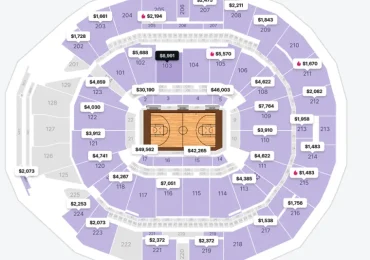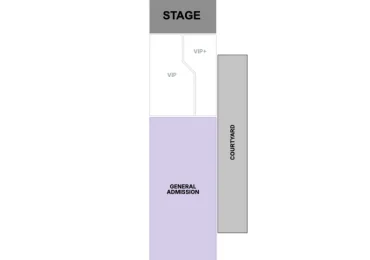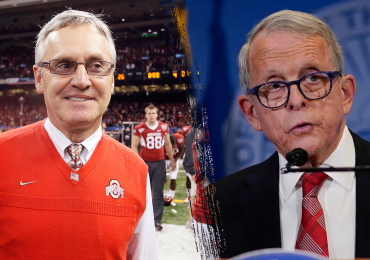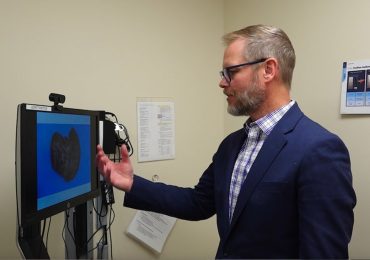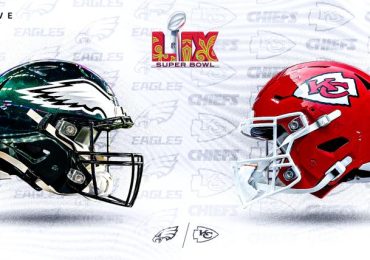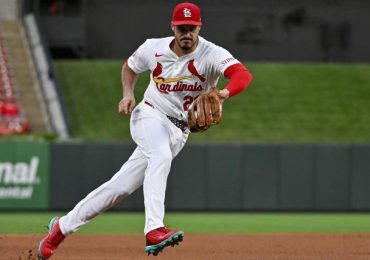Wednesday’s announcement of a support race being added to the Las Vegas Grand Prix weekend schedule is just the latest step in the evolution of Formula 1’s newest race.
A year ago, you needed to be living under a rock if you followed F1 and were not aware that there would be a race in Las Vegas at the end of the year. F1’s own investment in the event meant it was going big on all fronts, and using its own platforms and other races to promote what was coming in a way that few others get to.
This year, it’s going for a decidedly un-Vegas approach: Understated.
“Last year, we obviously did the launch party a year before, or more than a year before,” explains Emily Prazer, chief commercial officer for F1 and Las Vegas Grand Prix, Inc. “And we were penetrating marketing and informing everybody what this race was going to be, because it was a year one event.
“We spent unnecessary amounts of money on marketing last year to kind of get the hype and get everything going, which I think served its purpose. But when we did the post-race analysis, we realized that the majority of activity happened from 100 days onwards.
“So we didn’t do much really at the beginning of this year. We also wanted to give other races a bit more airtime. We are F1, and we felt that we were sucking the life out of the American market a bit with everything we were doing. So tactically, we said ‘enough with talking about this from January 1, let’s be a lot more thoughtful and strategic and take the lessons we learned and the data we learned.’
“So we really only started marketing with 100 days to go. There was a series of announcements that we’re super-excited about, there’s a lot more to come, and so we’re going to see the pickup.
“We had the first six months of the year doing a lot of the renewals. The U.S. market is used to that kind of mentality of smiling and dialing a lot of phone calls to rebook your tickets and all of that stuff. So we locked all of that in. Then the new business generation comes between 100 days and the race.”
Prazer notes the last-minute nature of many ticket sales in the Las Vegas entertainment space, because people don’t want to commit too early in case of other options. That’s partly due to so much of the market being locally-based in California and Arizona, and it came as a bit of a surprise to the organizers to have an 84% American crowd and little international attendance.
But there were also reasons that the very brash – and very Vegas – approach was taken in year one, and Prazer admits that to a degree it was driven by the fear of the unknown.
“We took on the feedback, it is a destination which commands entertainment but we wanted the entertainment to be as good as the racing,” she says. “I think the first year, none of us knew how the racing was going to turn out, so we wanted to overcompensate because we wanted to make sure that it was a full kind of .
“Until you see those cars go around the track and see what actually happens, it’s very hard to just watch it on simulators going ‘oh, it’s going to be a good race’. We had confidence, but when that came to life, obviously everybody wanted it to be very Vegas-driven. And so do the partners in Vegas. They ultimately drive a lot of our mentality, the MGMs, Wynns, Caesars… they’re incredible partners, but you see how they market the destination.
“And we said, ‘right, let us take it up 15 notches’, which I think we did in year one. But the intent is to scale some of that back. And we felt that we did do too much.”
In the case of some of the things that the Las Vegas organizers felt were too big, the issue wasn’t just the cost or the effort required, but also an acknowledgement that some of the projects didn’t directly target the local community effectively enough.
 The LVGP’s emphasis on extravagance during last year’s inaugural race priced a lot of traditional fans out of the picture, but changes are being made to ensure that the 2024 event has something for everyone. Simon Galloway/Motorsport Images
The LVGP’s emphasis on extravagance during last year’s inaugural race priced a lot of traditional fans out of the picture, but changes are being made to ensure that the 2024 event has something for everyone. Simon Galloway/Motorsport Images
“The Wednesday night was a one-off. I will never, ever be allowed to spend that amount of money again on a 30-minute show,” Prazer says. “We were nominated for an Emmy, but apart from that… It was a project in itself.
“The Netflix Cup was great, but it’s not something we felt it was… Until we shifted the focus to this fan festival to help us solve some of the local problems – which have been very well documented, so nothing of a secret there – it’s just that our priorities were Formula 1-driven, not local community-driven.
“So we’ve had to change our approach. We did the same in ticketing, where initially we were like, ‘right, it’s a big, sexy new event, we’re going to have a ton of hospitality’. We learned that lesson. We now have more accessible tickets, GA zones, and something for everybody versus something for just the high end.
“The hotel room rates are now much, much more affordable and everybody has kind of found their feet. Our pre-grid show and those things are going to be exceptional. But at the same time, being really focused on fixing some of those different issues we had. But for a first year event, we’re obviously very proud of what we delivered.”
Even though it wasn’t shy about marketing itself as high-end, the Las Vegas race came in for a lot of criticism in its first year due to the focus on hospitality and lucrative packages. While Prazer feels value for money was there – as an example, she highlights that expensive options included all food and drink to reduce concessions costs – she says the race hasn’t been afraid to listen to that feedback and react.
“If you look at the product comparison to last year, the Koval Straight was all hospitality suites. This year it’s grandstands and GA zones, because that was the demand people wanted to see,” she says. “So we’re working hard to find that balance.
“We might find next year that we do need to rebuild some of the hospitality, but again, that was the feedback, so we’d be naive not to take that and really try and fix what we felt was a problem.”
Prazer worked in the promoter team at F1 before joining the Vegas set-up, and admits the overall company is “a lot more sympathetic” to what promoters have to deal with as a result. It’s a position that does give the Las Vegas property an advantage though, as plans are progressing to try and turn the pit and paddock complex into a year-round destination.
But even amid a concerted effort to scale certain aspects back and focus on the core racing product a bit more when it comes to the race weekend, it’s still Las Vegas. So there are some very unique offerings that will be part of the event.
“I was at F1 prior to going to Vegas, and I was in the promoter team, so I always had a little bit more exposure than others,” she says. “I think we’re just a lot more sympathetic to the challenges of live events than we ever have been, and obviously the costs associated with it and how to market the sport in different regions. Obviously the global business is one thing, but actually being hands-on and understanding how to communicate differently.
“So with a lot of the learnings, we talk about Las Vegas within Formula 1 as almost like our little bit of an incubator where we get to try some different things and push the boundaries a bit more, because it’s Vegas.
“So we’re putting an ice rink on the roof of the Paddock Cub in Vegas this year. You would never see us do that anywhere else. But the intent is like, ‘how do we create more of an entertainment proposition?’
“It is not an obvious connection with Formula 1, but Vegas has got the Golden Knights. We’re doing a very fun merch collaboration with the Golden Knights.
“But the idea is, honestly, that if you look at the size of the Paddock Club and making sure that you actually activate all the space, it was one of those of, ‘what do we do?’ It’s a lot of fun.”


